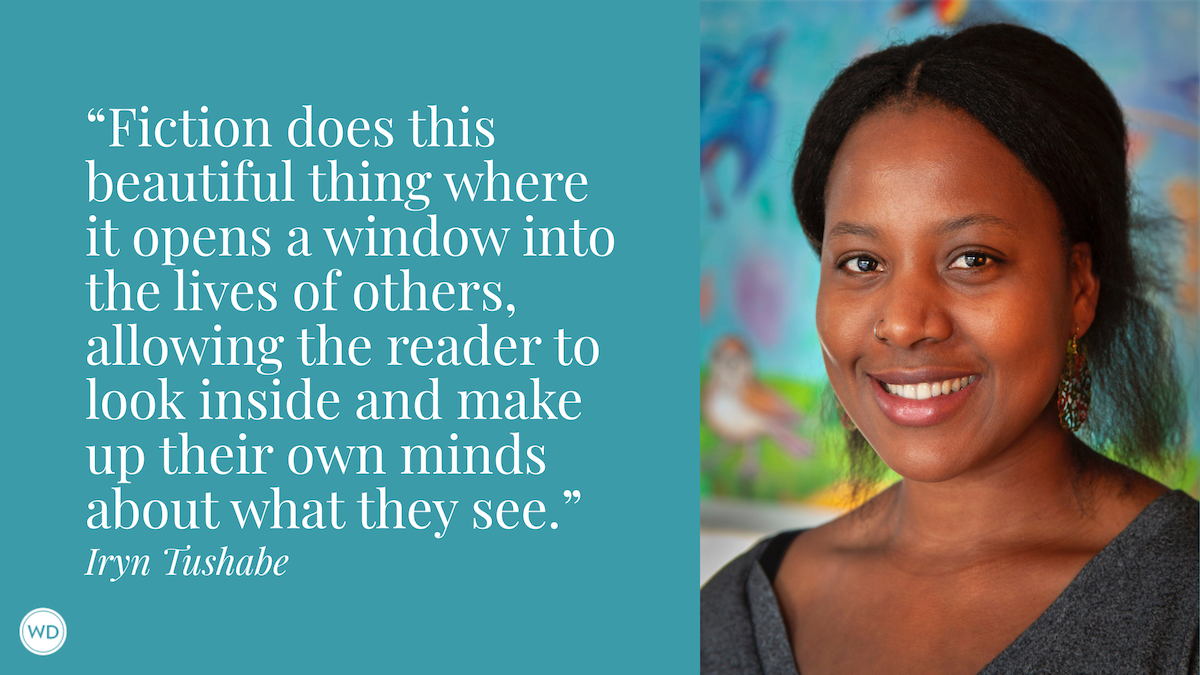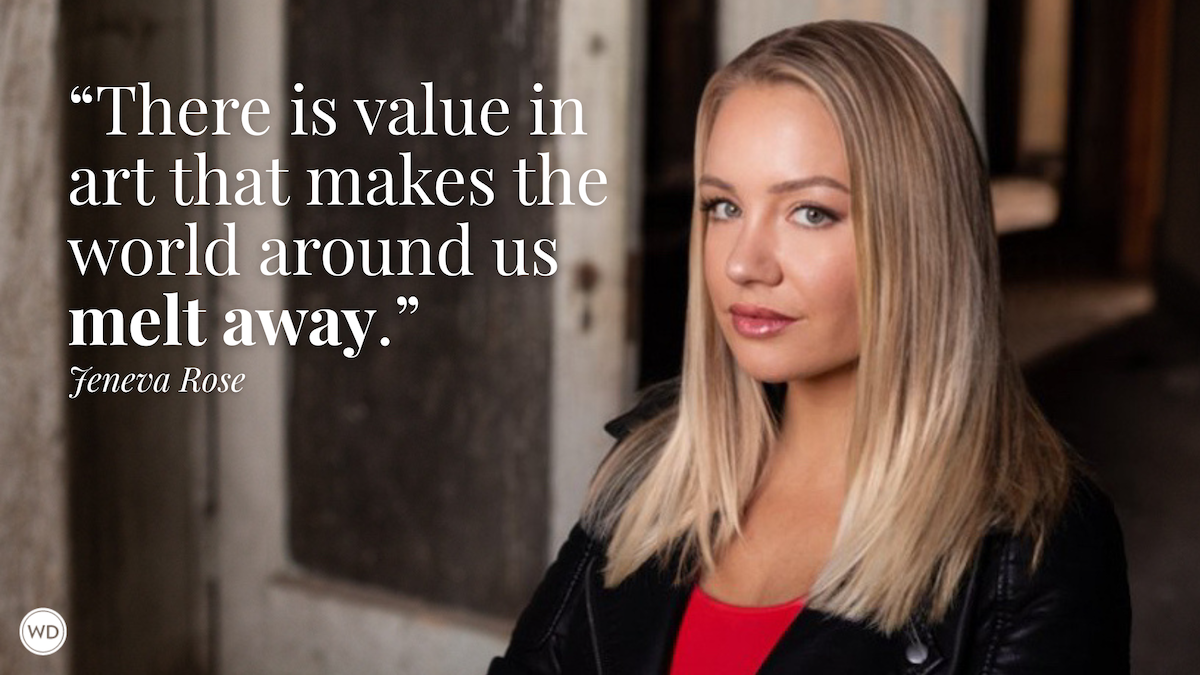What Is Literary Fiction?
Editor Michael Woodson discusses literary fiction as a writing style, what makes it unique, and how studying it can help writers of all genres.
Readers and writers tend to have pretty big feelings about literary fiction one way or the other. The general consensus is you either love it or loathe it. It has something of a reputation of being a snobbish, dense, out-of-touch form that is unwelcoming to genre fiction. I understand why people would feel this way. I personally don’t.
I love literary fiction. While I try to read broadly, it’s the kind of book I tend to gravitate toward and the kind of writing I feel most comfortable with. I firmly believe that literary fiction doesn’t need to be dense, unreadable dirges about the darkness of life. In my experience, contemporary literary fiction is a creative and unique writing style coming from a truly diverse range of writers where all the rules get to be broken. Literary fiction can be any genre and should be for the masses, because at the heart of every work of literary fiction is the human experience.
As someone who reads middle-grade fiction, magical realism, fantasy fiction, literary fiction, and more, I know there is a book for everyone from every genre. So, let’s talk a little bit about literary fiction.
What Is Literary Fiction?
Literary fiction is less of a genre than it is a category, which makes defining it difficult, but you know it when you read it.
For a general understanding, literary fiction focuses on style, character, and theme over plot—unlike most genre and commercial fiction. This means that literary fiction is not beholden to certain tropes or genre expectations to be considered lit fic, but that also means it can feature elements of any genre and still be categorized as lit fic. Lit fic can be suspenseful and shocking, sweeping and romantic, sarcastic and cynical … you name it, there’s a literary fiction novel that’s got it.
Literary fiction is often slower in its pacing and welcomes readers to take their time in the process; to dawdle in the details. It’s often observational, conflicts arising from the internal, with some aspects of the story still left open in the final pages.
Here’s an excerpt from Spring by Ali Smith, the third book in her Seasonal Quartet:
“The air lifts. It’s the scent of commencement, initiation, threshold. The air lets you know quite ceremonially that something has changed. Primroses deep in the ivy throw wide the arms of their leaves. Colour slashes across the everyday. The deep blue of grape hyacinth, the bright yellow in wastelands catching the eyes of the people on trains. Birds visit the leafless trees, but not leafless like in winter; now the branches stiffen, the ends of the twigs glow like low-burning candles.
Then the rain, and the first sign of the branch splitting open to blossom on the old tree, the light inside visible in the wood, you can see it even at night under the streetlamp.”
This is a hyper-focused moment focused almost exclusively on nature, and specifically of the time of year. There’s something nostalgic in this without ever revealing itself. Nature is personified and, in a way, is a character here.
Now consider this other excerpt from the same book:
“’You can’t cry about summer coming,’ he says. ‘I could understand you crying about winter. But summer?’
‘I can cry about anything I like,’ she says. He is surprised. Can people just do that, cry about anything they like? He wishes it held true for him. He can never cry about anything.
His future wife, rubbing her face against his chest hair to dry her eyes, which feels actually very erotic, and sex quite often does make her cry in their early days together, tells him that after she’s dead she’s going to come back every year as a blossom on a tree.
'And if you die before me,’ he says, ‘I will spend all the time I’m alive and not with you negotiating the various time differences across the world so that I can spend as much time as a man possibly can on this planet in springtime, in search of you.’”
The dialogue and internal thoughts reveal so much about the characters. Not to mention how the repetition (“I can cry about anything I like" vs. “Can people just do that, cry about anything they like?”) shows how the same thing said by one person and thought by another can hold different meaning.
Take a look at the sentence structure, too. Some sentences feel like they go on forever, with many commas connecting the words, and are so long you think they’ll never end, until you’ve lost your breath completely and then, finally, it's over. Then some are short. Fun, right?
Neither of these excerpts reveals plot. And that’s OK! The plot in a literary fiction novel will be meandering, and it may be so slight that you don’t even know what it was “about” until you’ve finished reading it.
Expect The Unexpected
Because literary fiction is less of a genre and more a writing style, readers beware: There’s nothing to prepare you for any given literary fiction novel.
One of the through-lines for genre fiction is the presence of tropes and structures that are required for them to be considered whatever genre they are. We know a couple will end up together at the end of a romance novel. We know the mystery will be solved by the end of a mystery novel. The same is not necessarily true for literary fiction. You can’t really expect anything in particular before going into it, which means there’s an inherent risk in both choosing to read it and write it. Readers can’t be guaranteed some version of a known ending; writers have the difficult task of writing without a previously-built-upon format.
For me, this is part of the joy of literary fiction. Literary fiction can and does employ elements of genre fiction but gets to go in its own direction with it. You might think you’re reading a romance, and then something truly shocking happens that changes the course of the book and changes your perception of what you’re reading.
Why So Serious?
Everyone’s heard this about literary fiction: It’s depressing, too-serious stories written by too-serious people. And while there are these types of books that exist, it’s certainly not the only kind of literary fiction novel out there.
I recently read a genre book where one of the characters was a Serious Literary Fiction Writer, and every stereotype was on full display. The character was only interested in the darkest aspects of life and of the world, which came from the characters’ own dark, dismal past. This highlights what I think is a general misconception of what it means to write literary fiction, and what keeps readers from exploring the category.
I've never laughed, cried, and swooned more than when I read Less by Andrew Sean Greer. I’ve never been more tense than reading the friction between characters in Real Life by Brandon Taylor. I’ve never been more shocked by a twist than I was in Fates and Furies by Lauren Groff. I’ve never been more emotional than I was reading the relationship at the center of An American Marriage by Tayari Jones. You won’t find a “literary fiction” section at your favorite local bookstore for this exact reason: So many books can be considered literary fiction! It’s not about subject matter, it’s about writing style.
Why You Should Explore Literary Fiction
I think being well-rounded readers makes us better writers, and I believe we can learn something from every genre. I write better dialogue because of the romance novels I’ve loved. I do better world-building because of the fantasy novels I’ve loved. The more I read outside of my genre of choice, the better my writing is within it.
So, if you’re feeling overwhelmed with where to start, ask a bookseller at your local bookstore. Tell them what you usually like to read, and they’ll point you to the right lit fic. Or ask me! I’ll gladly share my favorite literary fiction novels that I think you’ll love and will help you with your writing.
Michael Woodson is the content editor at Writer's Digest. Prior to joining the WD team, Michael was the editorial and marketing manager for the independent children's book publisher Blue Manatee Press. He was also the associate editor for Artists Magazine and Drawing magazine, and has written for Soapbox Cincinnati, Watercolor Artist, and VMSD magazine. An avid reader, Michael is particularly interested literary fiction and magical realism, as well as classics from Jane Austen, Ernest Hemingway, and E.M. Forster. When he's not reading, he's working on his own stories, going for a run at his favorite park, or cuddling up to watch a movie with his husband Josh and their dog Taran.








